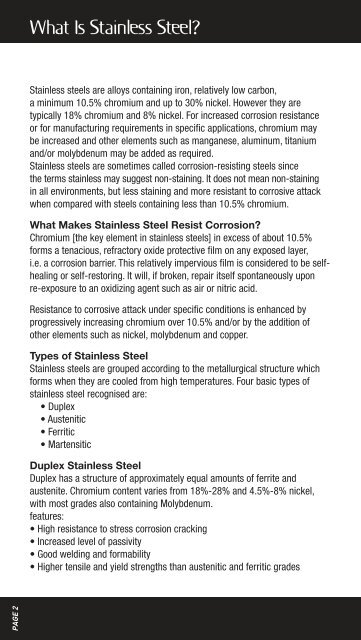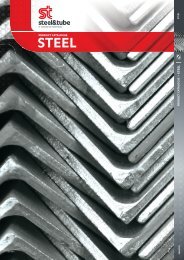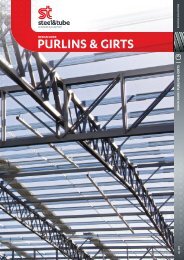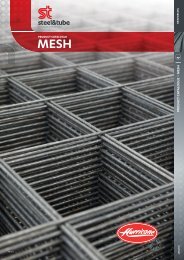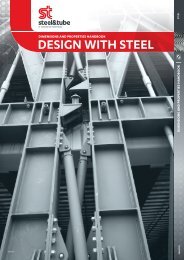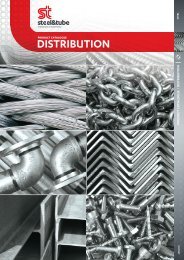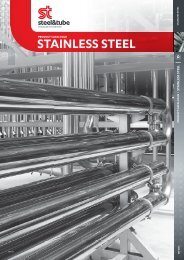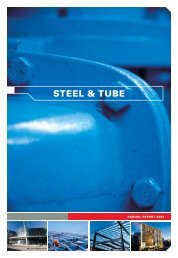STAINLESS
STAINLESS STEEL - Steel & Tube
STAINLESS STEEL - Steel & Tube
You also want an ePaper? Increase the reach of your titles
YUMPU automatically turns print PDFs into web optimized ePapers that Google loves.
What Is Stainless Steel?<br />
Stainless steels are alloys containing iron, relatively low carbon,<br />
a minimum 10.5% chromium and up to 30% nickel. However they are<br />
typically 18% chromium and 8% nickel. For increased corrosion resistance<br />
or for manufacturing requirements in specifi c applications, chromium may<br />
be increased and other elements such as manganese, aluminum, titanium<br />
and/or molybdenum may be added as required.<br />
Stainless steels are sometimes called corrosion-resisting steels since<br />
the terms stainless may suggest non-staining. It does not mean non-staining<br />
in all environments, but less staining and more resistant to corrosive attack<br />
when compared with steels containing less than 10.5% chromium.<br />
What Makes Stainless Steel Resist Corrosion?<br />
Chromium [the key element in stainless steels] in excess of about 10.5%<br />
forms a tenacious, refractory oxide protective fi lm on any exposed layer,<br />
i.e. a corrosion barrier. This relatively impervious fi lm is considered to be selfhealing<br />
or self-restoring. It will, if broken, repair itself spontaneously upon<br />
re-exposure to an oxidizing agent such as air or nitric acid.<br />
Resistance to corrosive attack under specifi c conditions is enhanced by<br />
progressively increasing chromium over 10.5% and/or by the addition of<br />
other elements such as nickel, molybdenum and copper.<br />
Types of Stainless Steel<br />
Stainless steels are grouped according to the metallurgical structure which<br />
forms when they are cooled from high temperatures. Four basic types of<br />
stainless steel recognised are:<br />
• Duplex<br />
• Austenitic<br />
• Ferritic<br />
• Martensitic<br />
Duplex Stainless Steel<br />
Duplex has a structure of approximately equal amounts of ferrite and<br />
austenite. Chromium content varies from 18%-28% and 4.5%-8% nickel,<br />
with most grades also containing Molybdenum.<br />
features:<br />
• High resistance to stress corrosion cracking<br />
• Increased level of passivity<br />
• Good welding and formability<br />
• Higher tensile and yield strengths than austenitic and ferritic grades<br />
PAGE 2


